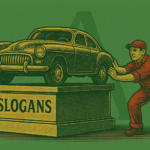If you’ve heard about what classical conditioning is. It’s the process of learning a new behaviour via an association. In this blog, we’ll discuss some awesome classical conditioning examples that’ll help you gain a better idea of the subject.
Table of Contents
Classical Conditioning in Marketing
In marketing, classical conditioning can be used to promote aggressive learning that helps customers associate certain behaviours or feelings with brands or products. Classical conditioning involves learning a new behaviour after developing a certain association with the stimuli.
Many brands use this approach to associate their products with an action or emotion that might help the product sell and increase revenue.
Classical Conditioning Examples in Daily Life
To help you develop a better understanding, let’s discuss a few classical conditioning examples in daily life.
Example 1
The advertisements you’ve seen on billboards and television typically feature classical conditioning. Most companies use various models to make their ads more relatable.
For instance, some brands may use cartoon characters in their commercials to attract children. In the same way, advertisers also use female models to promote specific products.
Example 2
If a child is bullied in school, he or she may start associating school with fear and anguish. In the same way, students may also start to develop a dislike for particular subjects if they are punished by their teachers.
If parents don’t work hard to change their child’s point of view, the student may continue to dislike the particular subject throughout their academic career.
Example 3
Do you remember getting vaccinated as a child? As soon as a child begins to cry while getting a shot, most of the kids standing in queue also start crying. The children standing in line have already associated the needle with pain.
This is an excellent example of classical conditioning where crying is the learned behaviour.
Example 4
We all have that one song that reminds us of the past or simply puts us in a good mood. As humans, we often associate objects with feelings. For instance, one may associate a song with all the wonderful times they spent with their spouse.
At times, these associations are so strong that we are reminded of past experiences and memories.
Example 5
People who have been through a traumatic experience may feel a rush of anxiety if they’re found stuck in a similar situation. For instance, folks who have been a victim of a car accident may have a hard time stepping inside another vehicle again.
Depending on the degree of impact, victims may feel a surge of fear every time they come across a similar situation. This is why some people have a difficult time driving after they’ve been in a car accident.
Example 6
Suppose your boss always nags you about work whenever he or she gets the chance. Eventually, you get so tired of being lectured that you dread running into your boss, even when you’re at a dinner party or outside work.
Over time, the association becomes so strong that you can’t stand being in the same room as the person.
Example 7
Suppose you have a pet dog named Max who loves going out for a walk. Over the years, Max has understood that he’s supposed to wear a leash before stepping outdoors.
Now every time Max sees you nearing him with a leash, he’s going to rejoice on the idea of going outdoors even if you’re only organizing his doggie door. Like humans, some animals, too are intelligent enough to respond to classical conditioning.
Hopefully, these classical conditioning examples have taught you everything you need to know about classical conditioning. To learn more about human behavior, don’t forget to check out our blog about operant conditioning. Good luck!
Last modified: July 8, 2025




